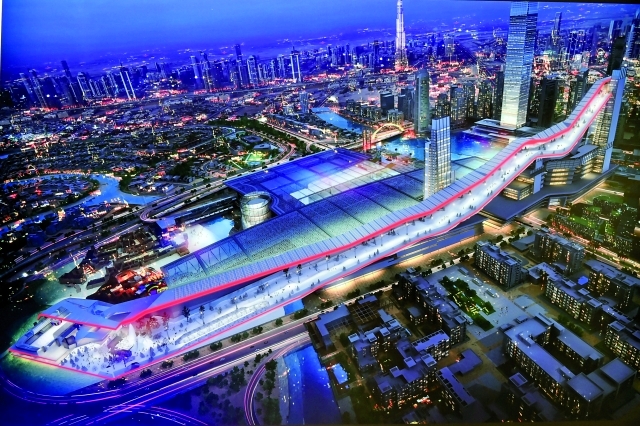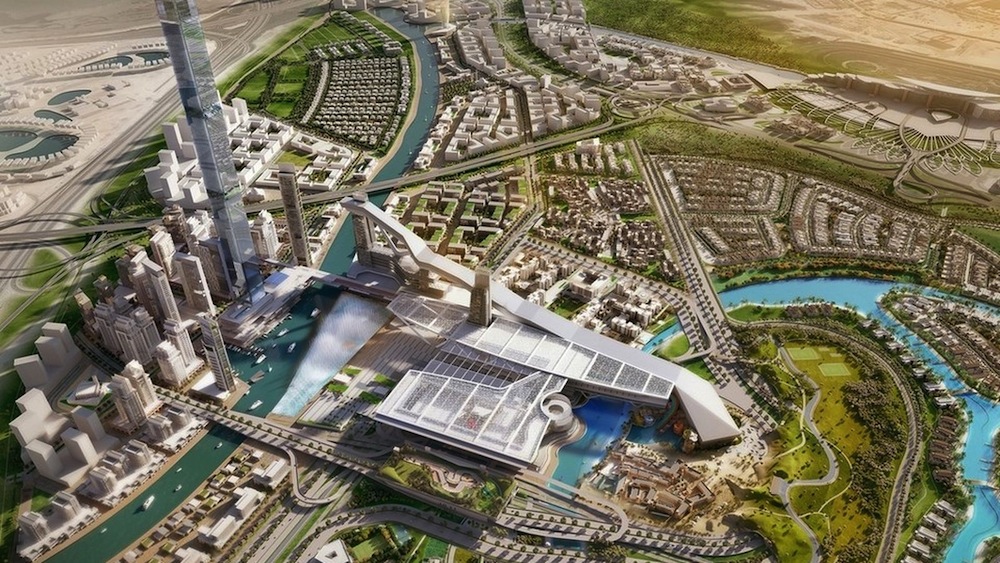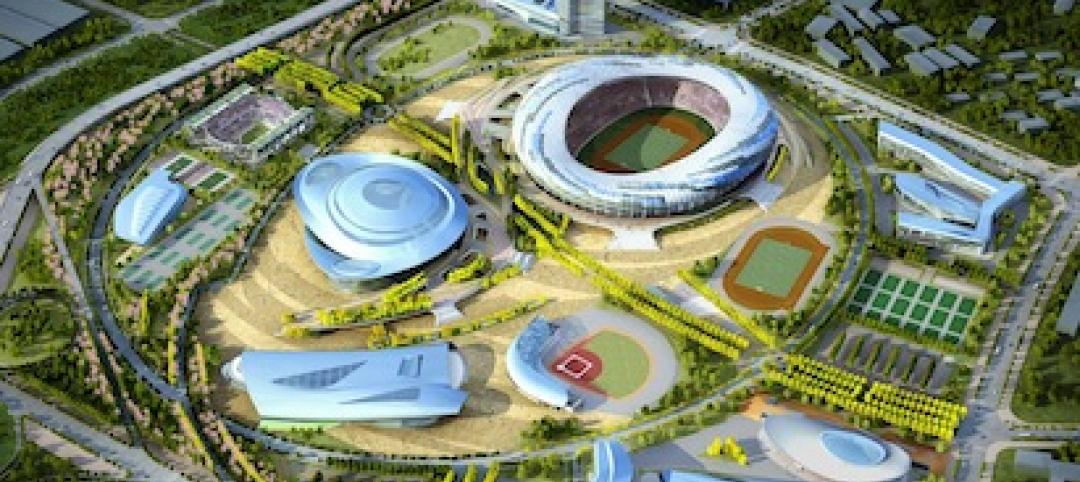The words “skiing” and “desert” aren’t often used in the same sentence. But that’s changing in Dubai, which appears to be on a mission to have the “biggest” of everything, including extravagant shopping malls, towers, and, now, ski slopes.
Gulf News reports that the oil-rich country is planning a project that will cover 3.67 million sm (39.5 million sf) and include a shopping mall, civic plaza, a 4-kilometer canal, a marina with 100 boat slots, and what’s being touted as the world’s longest indoor ski slope.
The developer, Meydan City Corporation, states that this project should be completed before 2020, the year that Dubai hosts the World Expo 2020. While the developer didn’t disclose what this project might cost, The Guardian reports estimates of up to 25 billion dirhams (about $6.8 billion).
The Dubai newspaper Al-Bayan reports that this project would extend from the Meydan racetrack to Burj Khalifa, the world’s tallest tower.
The shopping mall component of this project, called Meydan One Mall, alone will cover 25,000 sm (269,000 sf), and include a retractable roof measuring 150 x 80 meters. The mall will be adjacent to the 1.2-kilometer (4,922-foot) long ski slope. (The Emirate already holds the record for the largest indoor ski slope, at 400 meters long, which runs year-round inside the Mall of the Emirates, according to The Guardian.)
At the base of the ski slope will be 25,000-sm Meydan Arena, which will seat up to 8,000 people, and could be used for a variety of sporting contests and live shows.
This project also includes the construction of The Dubai One, a 711-sm-tall building that would be the tallest residential tower in the world. It will have 885 apartments and a five-star hotel with 350 rooms, as well as a conference center, a 655-meter observation deck, and skytop restaurant.
Residents and visitors will be able to avail themselves of more than 5.3 kilometers of bicycle and hogging trails, a 300-meter-long beach, and a heritage village that could house up to 78,000 people. The project will also feature a 420-meter-long “dancing” fountain, also said to be the world’s largest.

Related Stories
| Jun 12, 2014
Austrian university develops 'inflatable' concrete dome method
Constructing a concrete dome is a costly process, but this may change soon. A team from the Vienna University of Technology has developed a method that allows concrete domes to form with the use of air and steel cables instead of expensive, timber supporting structures.
| Jun 11, 2014
Esri’s interactive guide to 2014 World Cup Stadiums
California-based Esri, a supplier of GIS software, created a nifty interactive map that gives viewers a satellite perspective of Brazil’s many new stadiums.
| Jun 4, 2014
Construction team named for Atlanta Braves ballpark
A joint venture between Barton Malow, Brasfield & Gorrie, Mortenson Construction, and New South Construction will build the Atlanta Braves ballpark, which is scheduled to open in early 2017. Check out the latest renderings of the plan.
| Jun 2, 2014
Parking structures group launches LEED-type program for parking garages
The Green Parking Council, an affiliate of the International Parking Institute, has launched the Green Garage Certification program, the parking industry equivalent of LEED certification.
| May 29, 2014
7 cost-effective ways to make U.S. infrastructure more resilient
Moving critical elements to higher ground and designing for longer lifespans are just some of the ways cities and governments can make infrastructure more resilient to natural disasters and climate change, writes Richard Cavallaro, President of Skanska USA Civil.
| May 22, 2014
Just two years after opening, $60 million high school stadium will close for repairs
The 18,000-seat Eagle Stadium in Allen, Texas, opened in 2012 to much fanfare. But cracks recently began to appear throughout the structure, causing to the school district to close the facility.
| May 20, 2014
Kinetic Architecture: New book explores innovations in active façades
The book, co-authored by Arup's Russell Fortmeyer, illustrates the various ways architects, consultants, and engineers approach energy and comfort by manipulating air, water, and light through the layers of passive and active building envelope systems.
| May 19, 2014
What can architects learn from nature’s 3.8 billion years of experience?
In a new report, HOK and Biomimicry 3.8 partnered to study how lessons from the temperate broadleaf forest biome, which houses many of the world’s largest population centers, can inform the design of the built environment.
| May 16, 2014
Toyo Ito leads petition to scrap Zaha Hadid's 2020 Olympic Stadium project
Ito and other Japanese architects cite excessive costs, massive size, and the project's potentially negative impact on surrounding public spaces as reasons for nixing Hadid's plan.
| May 13, 2014
First look: Nadel's $1.5 billion Dalian, China, Sports Center
In addition to five major sports venues, the Dalian Sports Center includes a 30-story, 440-room, 5-star Kempinski full-service hotel and conference center and a 40,500-square-meter athletes’ training facility and office building.

















